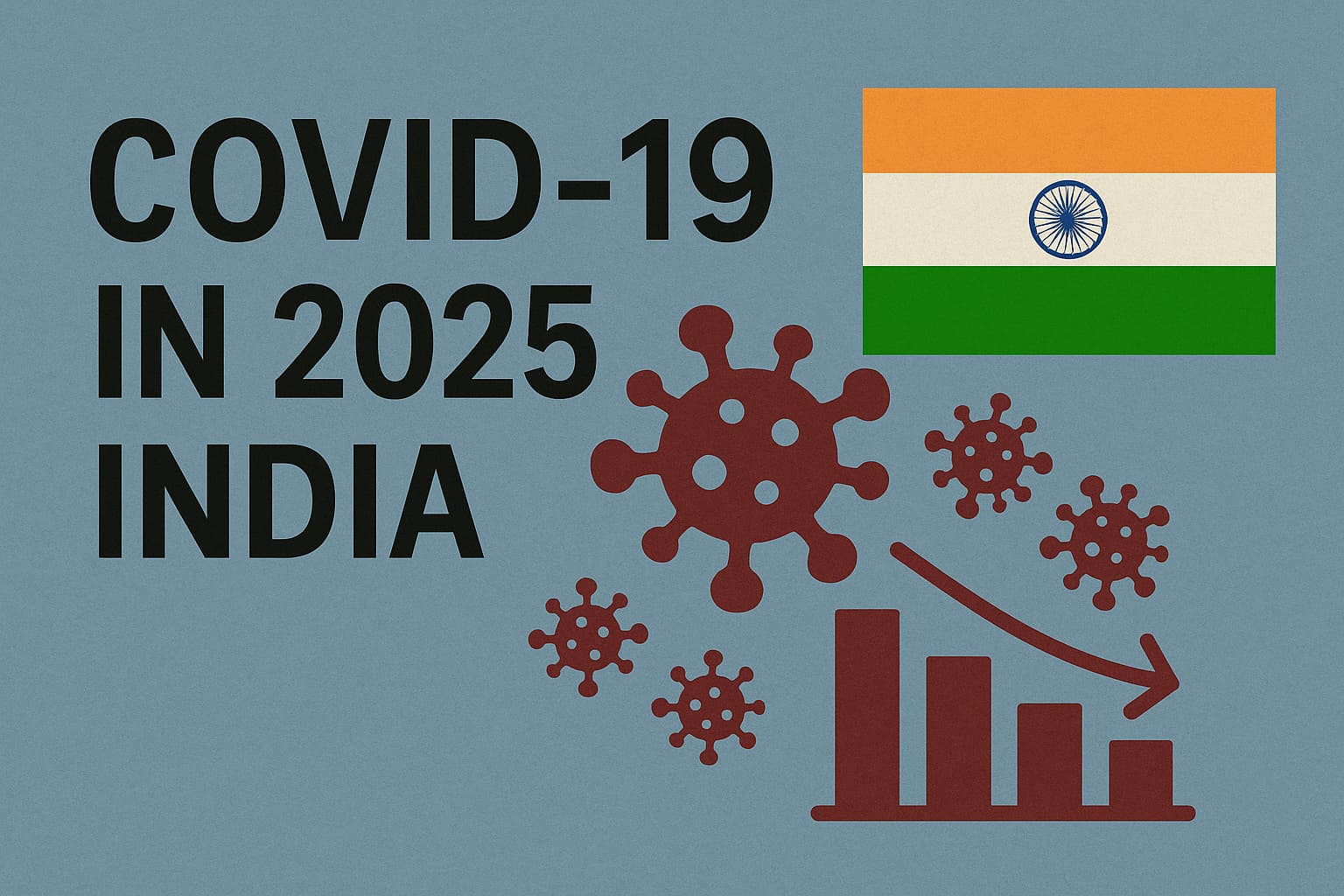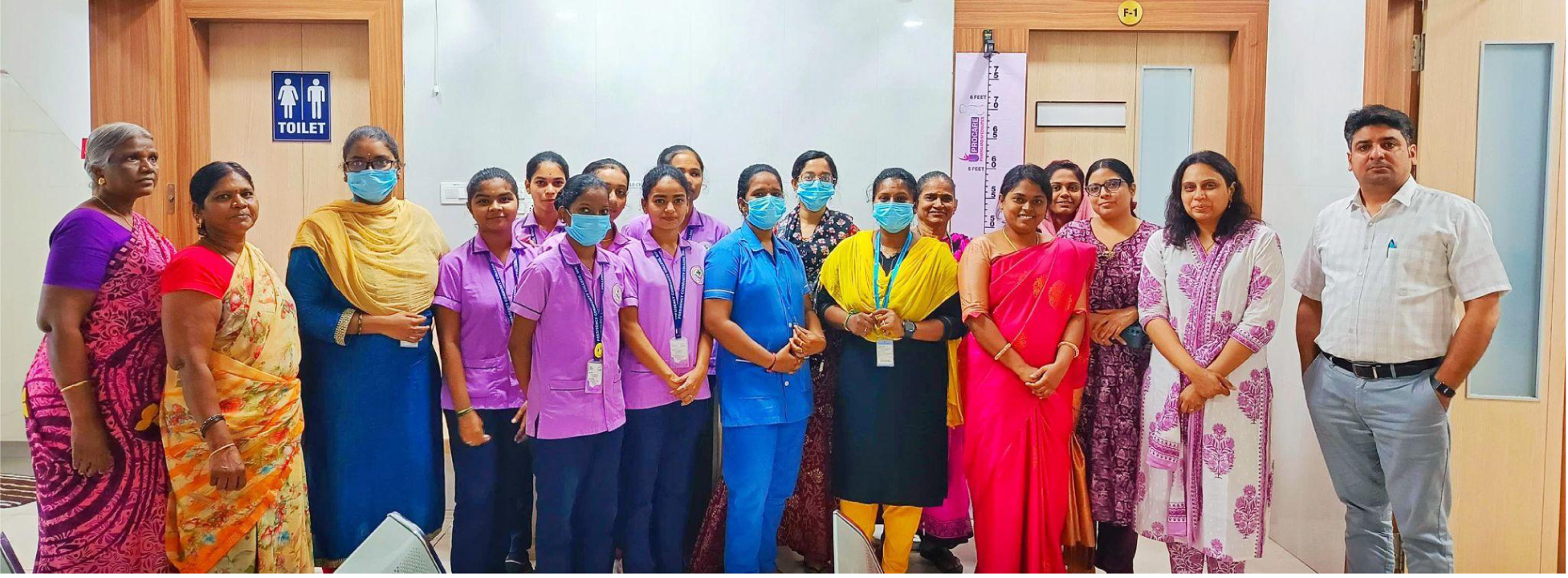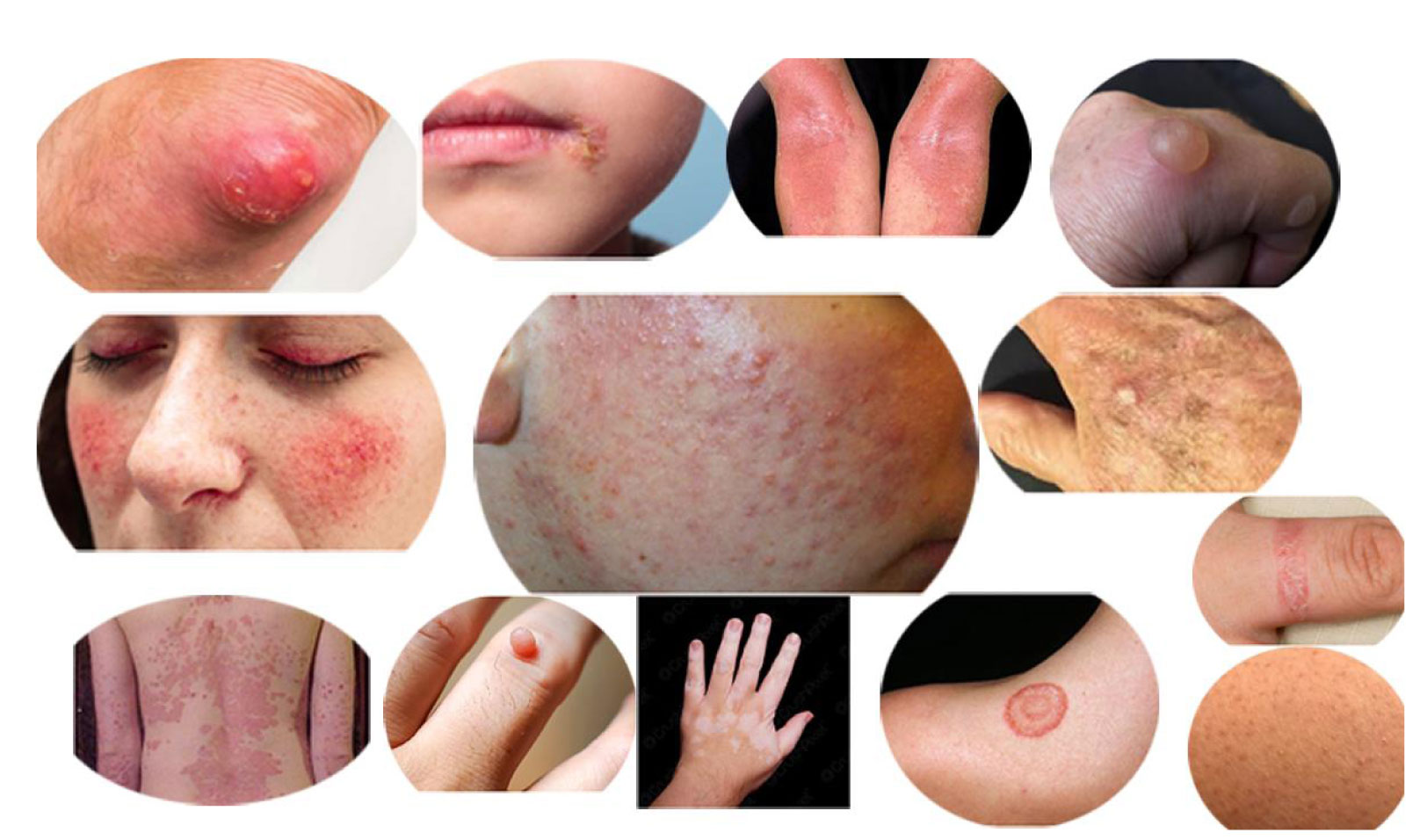Blog
 |
COVID-19 in 2025: How to Stay Safe and Healthy Amid Ongoing
Infections
Although the world has come a long way since the outbreak of COVID-19 in 2020, the virus is still part of our lives in 2025. With new variants like NB.1.8.1 causing mild but rising waves of infections in many countries— including India, the U.S., and parts of Europe— it’s important to remain cautious while continuing daily life. The virus may now be endemic, but it hasn’t disappeared.
|
Here’s a complete guide on how to stay safe, protected, and healthy in 2025.
What’s Happening in 2025?
New Variants: Omicron sub-variants such as NB.1.8.1 and JN.1.7.2 are spreading globally. They are generally less severe but highly contagious.
Mild to Moderate Illness: Most cases show cold-like symptoms—fever, sore throat, cough, body ache, and fatigue. In the elderly and those with existing health conditions, complications can still arise. .
Rise in Cases: India reported over 6,000 active cases in June 2025. Experts say it’s not a cause for panic, but caution is necessary. .
Long COVID Still Exists: Fatigue, brain fog, and chest discomfort continue to affect some patients weeks after recovery.
How to Stay Safe in 2025
While many restrictions have eased, these everyday practices can significantly reduce your risk of infection:
Keep Your Vaccinations Updated
Most updated vaccines now include protection against dominant variants.
Wear a Mask When Needed
|
|
 |
AJ Subaitha Medical Centre Hosts Free Women’s Health Camp:Empowering Women for Better Health On February 9, 2025, AJ Subaitha Medical Centre organized a Free Women’s Health Camp, offering essential healthcare services to women in the community. Running from 9:00 AM to 3:00 PM, the camp aimed to provide expert medical consultations, diagnostic tests, and education on the importance of women’s health. The event was an excellent opportunity for women to access free services, learn about maintaining good health, and gain important insights into hygiene and pregnancy care. |
| Free Expert Consultations and Health Services
The highlight of the event was the free expert consultations with experienced Obstetricians and Gynecologist Dr. Priyadharshini. P along with Dr. A. Sajitha Begum and Dr. Ashutosh Kumar Singh, Dr. Risswana Parveen, Dr.Kader were available to discuss a range of health concerns such as menstrual health, reproductive issues, family planning, and more. Their expert guidance provided attendees with the opportunity to ask questions and receive personalized medical advice.
In addition to consultations, the camp provided free blood tests to help detect potential health conditions such as hormonal imbalances, anemia, and other important health indicators. Pap smear tests, an essential screening for cervical cancer, were also available for free, empowering women to take proactive steps toward preventing and detecting any abnormal changes in their health.
Spreading Awareness on Women’s Health and Hygiene
A key focus of the event was raising awareness about the importance of women’s health and hygiene. The camp provided valuable educational sessions on a variety of topics such as:
Expert Team of Medical ProfessionalsThe success of the camp was made possible by the dedicated team at AJ Subaitha Medical Centre. Along with Dr. Priyadharshini P, the consultant gynecologist, the event saw the active participation of:
Providing Tips for a Safe and Uneventful Pregnancy
For women who are planning to become pregnant or are already expecting, the camp also focused on providing valuable tips for a safe and uneventful pregnancy. Experts discussed prenatal care, nutrition, and how to manage common pregnancy discomforts. The guidance provided at the camp emphasized the importance of early prenatal visits, healthy eating habits, and lifestyle modifications that contribute to a smooth pregnancy journey.
A Day of Health, Care, and Empowerment
The Free Women’s Health Camp at AJ Subaitha Medical Centre was a true celebration of women’s health. It provided a unique opportunity for women to access expert consultations, screenings, and health tips at no cost. More than just a medical event, it was a platform for empowering women to take control of their health and make informed decisions that will benefit their long-term well-being.
As the camp concluded, women left with a sense of empowerment and valuable knowledge about how to improve their health. The event also succeeded in fostering a sense of community and encouraging women to prioritize their health as an important part of their daily lives.
AJ Subaitha Medical Centre is committed to continuing to provide such essential services and educational opportunities in the future. Stay tuned for upcoming events and take advantage of these initiatives to stay healthy, informed, and empowered.
|
|
 |
Understanding and Preventing Pediatric Seasonal Illnesses The monsoon season, which spans June to July in India, brings much-needed relief from |
|
CommonPediatric Seasonal Illnesses in June-July
1. Dengue Fever ● Cause: Dengue fever is caused by the dengue virus, transmitted by Aedes mosquitoes, which breed in stagnant water. ● Symptoms: Highfever, severe headache, pain behind the eyes, joint and muscle pain, rash, and mild bleeding (e.g., nose or gum bleed). ● Prevention: Use mosquito repellents, wear long-sleeved clothing, use mosquito nets, and eliminate standing water around the home to prevent mosquito breeding. 2. Malaria ● Cause: Malaria is caused by Plasmodium parasites, transmitted through the bite of infected Anopheles mosquitoes. ● Symptoms: Highfever with chills, sweating, headache, nausea, vomiting, and fatigue. ● Prevention: Similar to dengue prevention, focus on mosquito control measures, use insecticide-treated nets, and take antimalarial prophylaxis if advised by a healthcare provider. 3. Viral Fever ● Cause: Various viruses can cause viral fever, which is common during the monsoon due to the spread of infections. ● Symptoms: Highfever, body aches, fatigue, sore throat, and runny nose. ● Prevention: Maintain good hygiene, avoid crowded places, and ensure children wash their hands frequently. 4. Gastroenteritis ● Cause: Gastroenteritis, or stomach flu, is often caused by viruses, bacteria, or parasites in contaminated food or water. ● Symptoms:Diarrhea, vomiting, stomach cramps, and fever. ● Prevention: Ensure safe drinking water, maintain food hygiene, wash hands before meals, and avoid street food. 5. Typhoid Fever ● Cause: Typhoid fever is caused by the bacteria Salmonella typhi, typically spread through contaminated food and water. ● Symptoms: Prolonged high fever, weakness, stomach pain, headache, and loss of appetite. ● Prevention: Vaccination, drinking boiled or bottled water, eating well-cooked food, and practicing good sanitation. 6. Leptospirosis ● Cause: Leptospirosis is a bacterial infection transmitted through contact with water contaminated by animal urine. ● Symptoms: Highfever, headache, muscle pain, red eyes, and sometimes jaundice. ● Prevention: Avoid walking in stagnant water, wear protective footwear, and maintain cleanliness around the house. Preventive Measures for Parents 1. Promote Hygiene Practices ★ Teach children the importance of washing hands regularly, especially before eating and after using the restroom. ★ Encourage regular bathing and changing into dry clothes to prevent fungal infections. 2. Safe Drinking Water ★ Ensurechildren drink only boiled or filtered water. ★ Avoidconsuming water from unreliable sources. 3. Nutritional Support ★ Provide abalanced diet rich in vitamins and minerals to boost immunity. ★ Ensurechildren stay hydrated with clean water and fluids. 4. Mosquito Control ★ Usemosquitonets, repellents, and coils to prevent mosquito bites. ★ Eliminate stagnant water around the house, which can serve as breeding grounds for mosquitoes. 5. Vaccinations ★ Stay up-to-date with vaccinations, including those for typhoid and other preventable diseases. ★ Consult a pediatrician about additional vaccines that might be beneficial during the monsoon season. 6. Proper Sanitation ★ Keeptheliving environment clean and dry. ★ Ensureproper disposal of garbage to avoid attracting pests. 7. Clothing and Footwear ★ Dresschildren in long-sleeved clothing to protect against mosquito bites. ★ Ensurethey wear waterproof footwear to avoid contact with contaminated water. Conclusion The monsoon season brings with it a heightened risk of pediatric seasonal illnesses in India. By understanding the common illnesses and implementing preventive measures, parents can significantly reduce the risk of their children falling ill. Emphasizing hygiene, ensuring safe drinking water, promoting nutritional health, and practicing effective mosquito control are key steps in safeguarding children’s health during June and July. Being vigilant and proactive can help ensure that the monsoon season remains a time of joy and relief rather than one of illness and worry. NOTE: This blog is solely for Information purpose**
|
|
 |
Staying Healthy in the Summer Heat: Preventing Heat-Related Illnesses As temperatures rise during the summer months, so does the risk of heat-related health issues. Common conditions like heat exhaustion and heat stroke can pose serious threats if not managed properly. Understanding these risks and knowing how to prevent them is essential for enjoying a safe summer. |
|
Heat Exhaustion and Heat Stroke
Heat exhaustion occurs when the body loses excessive water and salt through sweating. Symptoms include heavy sweating, weakness, dizziness, nausea, and headache. If left untreated, heat exhaustion can progress to heat stroke, a life-threatening condition characterized by a body temperature above 103°F, confusion, rapid pulse, and potential unconsciousness.
Prevention Tips
1. Hydration: Drink plenty of water throughout the day, even if you don’t feel thirsty. Avoid caffeinated and alcoholic beverages as they can dehydrate you.
2. Appropriate Clothing: Wear lightweight, loose-fitting, and light-colored clothing to help reflect the sun’s rays and keep your body cool.
3. Sunscreen: Apply a broad-spectrum sunscreen with at least SPF 30 to protect your skin from harmful UV rays, which can cause sunburn and impair the body’s ability to cool itself.
4. Limit Sun Exposure: Try to stay indoors during peak sun hours, usually between 10 a.m. and 4 p.m. If you must be outside, seek shade whenever possible.
5. Cool Environments: Spend time in air-conditioned places. If your home doesn’t have air conditioning, visit public places like malls, libraries, or community centers.
6. Monitor Activities: Reduce strenuous activities, especially during the hottest parts of the day. Take frequent breaks if you need to be outside.
Recognizing and Responding to Symptoms:
Early recognition of heat-related symptoms is crucial. If you or someone else shows signs of heat exhaustion, move to a cooler place, loosen clothing, and sip water. If symptoms worsen or if heat stroke is suspected, seek medical attention immediately as it requires urgent care. By following these guidelines, you can protect yourself and others from the dangers of heat-related illnesses, ensuring a safe and enjoyable summer season.
NOTE: THIS BLOGISONLYFORINFORMATIONPURPOSE*
|
|
 |
Unlocking the Healing Potential: The Role and Benefits of Physiotherapy Across All Age Groups Physiotherapy stands as a beacon of hope and healing, offering a multifaceted approach to rehabilitation, pain management, and physical well-being across the lifespan. From pediatric patients navigating developmental milestones to seniors reclaiming independence in their golden years, the transformative impact of physiotherapy resonates across all age groups. Let’s delve into the pivotal role and myriad benefits of physiotherapy in promoting optimal health and function at every stage of life. |
|
Pediatric Population: Nurturing Growth and Development
In the realm of pediatric care, physiotherapy assumes a pivotal role in nurturing the growth and development of children with diverse needs. From infants with congenital conditions to adolescents recovering from sports injuries, physiotherapists employ a holistic approach to address motor delays, improve mobility, and enhance functional independence. Through tailored interventions encompassing therapeutic exercises, gait training, and sensory integration techniques, physiotherapy empowers children to thrive and reach their full potential.
Adults: Restoring Function and Quality of Life
For adults grappling with acute injuries, chronic conditions, or postoperative rehabilitation, physiotherapy serves as a cornerstone of recovery and restoration. Whether it’s rehabilitating musculoskeletal injuries, managing pain, or optimizing mobility in neurological disorders, physiotherapists craft personalized treatment plans tailored to individual needs and goals. Through a comprehensive repertoire of manual therapy, therapeutic exercises, and modalities such as ultrasound and electrical stimulation, physiotherapy facilitates recovery, restores function, and enhances quality of life.
Seniors: Promoting Aging Gracefully
As individuals embark on the journey of aging, physiotherapy emerges as a stalwart ally in promoting vitality, independence, and well-being. From mitigating age-related declines in strength and balance to managing chronic conditions such as arthritis and osteoporosis, physiotherapists specialize in geriatric care, delivering tailored interventions to optimize physical function and mitigate fall risk. Through exercises targeting strength, flexibility, and coordination, along with education on safe mobility techniques and home modifications, physiotherapy empowers seniors to age gracefully and maintain autonomy in their daily lives.
Benefits Across the Spectrum:
The benefits of physiotherapy transcend age boundaries, encompassing a spectrum of physical, psychological, and social dimensions. Beyond rehabilitation and pain management, physiotherapy fosters holistic well-being by promoting cardiovascular health, enhancing respiratory function, and alleviating stress. Moreover, by empowering individuals to take an active role in their health through education, self-management strategies, and preventive care, physiotherapy fosters a culture of empowerment and resilience across the lifespan.
In conclusion, the role of physiotherapy as a catalyst for health and healing spans all age groups, from the cradle to the golden years. Through its holistic approach to rehabilitation, pain management, and functional optimization, physiotherapy unlocks the innate potential for recovery and resilience within each individual. As we navigate the complexities of life’s journey, let us embrace the transformative power of physiotherapy to nurture vitality, restore function, and enhance quality of life at every stage
Note: This blog is solely for information purpose*
|
|
 |
Exploring the Cutting-Edge Innovations in Diabetes Management
Diabetes, a chronic condition affecting millions worldwide, has long been a focal point of medical innovation. From advancements in medication to technological breakthroughs, the landscape of diabetes management is constantly evolving. In this blog, we delve into some of the latest innovations shaping the way we approach diabetes care. |
|
1. Continuous Glucose Monitoring (CGM) Systems: CGM systems have revolutionized diabetes management by providing real-time data on glucose levels. The latest CGM devices offer improved accuracy, extended wearability, and integration with smartphone apps for seamless tracking and analysis. With continuous insights into glucose trends, individuals can make informed decisions regarding diet, exercise, and medication. 2. Closed-Loop Insulin Delivery Systems:
Also known as artificial pancreas systems, closed-loop insulin delivery systems automate insulin dosing based on CGM readings. These systems reduce the burden of constant monitoring and decision-making, helping to maintain stable glucose levels throughout the day and night. Recent iterations feature advanced algorithms for personalized insulin delivery, enhancing efficacy and safety.
3. Telemedicine and Digital Health Platforms:
Telemedicine has gained traction as a convenient way for individuals with diabetes to access care remotely. Through virtual consultations, patients can receive guidance on medication management, lifestyle modifications, and glucose monitoring. Digital health platforms complement telemedicine by offering tools for self-management, educational resources, and community support, fostering engagement and empowerment.
4. Personalized Medicine and Precision Nutrition:
Advances in genomic research and data analytics have paved the way for personalized approaches to diabetes management. By analyzing genetic markers, biomarkers, and lifestyle factors, healthcare providers can tailor treatment plans to individual needs. Precision nutrition, guided by genetic insights and metabolic profiling, optimizes dietary choices to regulate blood sugar levels and improve overall health outcomes.
5. Wearable Devices and Smart Insulin Pens:
Wearable devices, ranging from smartwatches to patches, enable continuous monitoring of vital signs and activity levels, facilitating proactive management of diabetes. Smart insulin pens, equipped with Bluetooth connectivity and dose tracking capabilities, streamline insulin administration and dosage adjustments. These devices promote adherence to treatment regimens and enable remote monitoring by healthcare providers.
6. Artificial Intelligence and Predictive Analytics:
Artificial intelligence (AI) algorithms analyze vast amounts of data to predict glucose fluctuations, identify patterns, and optimize treatment strategies. Machine learning models integrated into CGM systems and insulin pumps can anticipate hypo- and hyperglycemic events, providing timely alerts and personalized recommendations. By harnessing the power of AI, healthcare providers can deliver proactive and preventive care to individuals with diabetes.
In conclusion, the landscape of diabetes management is undergoing a profound transformation driven by innovation. From continuous glucose monitoring and closed-loop insulin delivery to telemedicine and artificial intelligence, these advancements hold the promise of improving outcomes and enhancing the quality of life for individuals living with diabetes. As technology continues to evolve, the future of diabetes care looks increasingly personalized, precise, and patient-centered.
|
|
 |
Navigating the Latest Guidelines for Hypertension Management in India
Hypertension, often referred to as the “silent killer,” is a prevalent cardiovascular condition affecting millions of people in India. As our understanding of hypertension evolves, so do the guidelines for its management. In this blog, we’ll explore the latest recommendations and strategies for effectively managing hypertension in the Indian context. |
|
Understanding Hypertension:
Hypertension, or high blood pressure, is a chronic medical condition characterized by elevated blood pressure levels persistently above the normal range. Left untreated, hypertension can lead to serious complications such as heart disease, stroke, and kidney damage.
Latest Guidelines:
The latest guidelines for hypertension management in India are primarily based on recommendations from prominent organizations such as the Indian Society of Hypertension (ISH), the Cardiological Society of India (CSI), and the Ministry of Health and Family Welfare. These guidelines emphasize the importance of early detection, risk stratification, lifestyle modifications, and pharmacological interventions tailored to individual patient needs.
Key Recommendations:
1. Blood Pressure Targets:
The target blood pressure levels for hypertensive patients in India typically align with international guidelines, aiming for values below 130/80 mmHg for most individuals. However, targets may vary depending on factors such as age, comorbidities, and overall cardiovascular risk profile.
2. Lifestyle Modifications:
Lifestyle interventions play a crucial role in hypertension management and are often recommended as first-line therapy. These include dietary changes (such as reducing sodium intake and adopting a DASH diet rich in fruits, vegetables, and whole grains), regular physical activity, weight management, moderation of alcohol consumption, and smoking cessation.
3. Pharmacological Interventions:
When lifestyle modifications alone are insufficient to control blood pressure, pharmacological therapy may be initiated. The choice of antihypertensive medications is guided by factors such as blood pressure levels, presence of comorbidities (e.g., diabetes, chronic kidney disease), and potential side effects. Commonly prescribed antihypertensive drug classes include angiotensin-converting enzyme (ACE) inhibitors, angiotensin II receptor blockers (ARBs), calcium channel blockers (CCBs), diuretics, and beta-blockers.
4. Risk Stratification:
Risk assessment is essential for identifying individuals at higher risk of cardiovascular events and tailoring treatment accordingly. Risk factors such as age, gender, family history, presence of diabetes or chronic kidney disease, and additional cardiovascular risk factors (e.g., dyslipidemia, smoking) are taken into account when determining the optimal management approach.
5. Regular Monitoring and Follow-up:
Hypertensive patients require regular monitoring of blood pressure levels to assess treatment efficacy and adjust therapy as needed. Follow-up visits with healthcare providers allow for ongoing evaluation of cardiovascular risk factors, medication adherence, lifestyle modifications, and management of any complications or adverse effects.
Conclusion:
Effective management of hypertension in India relies on a multifaceted approach encompassing lifestyle modifications, pharmacological therapy, risk assessment, and regular monitoring. By adhering to the latest guidelines and individualizing treatment plans based on patient-specific factors, healthcare providers can optimize outcomes and reduce the burden of hypertension-related complications in the Indian population.
Remember, early detection and proactive management are key to controlling hypertension and promoting cardiovascular health.
|
|
 |
Stress is a natural part of life. It’s our body’s response to challenging situations, and it can be helpful in short bursts, sharpening our focus and motivating us to take action. However, when stress becomes chronic, it can wreak havoc on both our physical and mental health.
|
|
The Physical Toll of Stress – Chronic stress can manifest in a variety of physical symptoms, including:
More concerning, long-term stress can increase your risk of developing chronic health conditions such as:
The Mental Impact of Stress
Stress can also have a significant impact on our mental well-being. It can lead to:
In severe cases, chronic stress can contribute to mental health disorders such as:
Managing Stress for Better Health. The good news is that stress is manageable. By incorporating healthy coping mechanisms into your daily routine, you can reduce its negative impact and improve your overall health.
Here are some tips:
Remember, you’re not alone in managing stress. By taking proactive steps and seeking support when needed, you can build resilience and protect your physical and mental health.
|
|
 | Understanding Headaches: Types, Causes, and Treatment Modalities Headaches are a common neurological condition that affects people of all ages and backgrounds. While most headaches are temporary and benign, some can be debilitating and significantly impact quality of life. In this article, we will explore the various types of headaches, their causes, and the latest treatment modalities and guidelines available to manage them effectively. |
Types of Headaches: 1. Tension Headaches: These are the most common type of headache characterized by a dull, aching pain on both sides of the head. They are often triggered by stress, poor posture, or muscle tension. 2. Migraine Headaches: Migraines are intense, throbbing headaches often accompanied by nausea, vomiting, and sensitivity to light and sound. They can last for hours to days and significantly impair daily functioning. 3. Cluster Headaches: Cluster headaches are excruciatingly painful headaches that occur in clusters or patterns, usually on one side of the head. They are often described as sharp, burning, or piercing and can last from weeks to months before going into remission. 4. Sinus Headaches: These headaches occur due to inflammation or infection of the sinuses and are often accompanied by facial pressure and congestion. 5. Secondary Headaches: Secondary headaches are a symptom of an underlying medical condition such as head injury, infection, or medication overuse. Causes of Headaches: The exact cause of headaches varies depending on the type, but common triggers include: – Stress and anxiety Treatment Modalities and Guidelines: 1. Over-the-Counter Medications: For mild to moderate headaches, over-the-counter pain relievers such as acetaminophen, ibuprofen, or aspirin can provide relief. It’s essential to follow the recommended dosage and not exceed it to avoid medication overuse headaches. 2. Prescription Medications: For more severe headaches, prescription medications such as triptans (for migraines), ergotamines, or preventive medications like beta-blockers, antidepressants, or anticonvulsants may be prescribed by a healthcare professional. 3. Lifestyle Modifications: Lifestyle changes such as maintaining a regular sleep schedule, staying hydrated, managing stress through relaxation techniques or therapy, and avoiding triggers can help prevent headaches. 4. Alternative Therapies: Some people find relief from headaches through alternative therapies such as acupuncture, chiropractic adjustments, biofeedback, or herbal supplements. However, more research is needed to determine their effectiveness. 5. Botox Injections: Botox injections have been approved by the FDA for chronic migraine prevention. They work by blocking the release of certain chemicals involved in pain transmission. 6. Neuromodulation Devices: Devices such as transcranial magnetic stimulation (TMS) and non-invasive vagus nerve stimulation (nVNS) have shown promising results in treating migraines by modulating pain pathways in the brain. Conclusion: While headaches can be challenging to manage, understanding the underlying causes and triggers can help individuals find effective treatment modalities. It’s essential to work closely with a healthcare professional to develop a personalized treatment plan tailored to individual needs. By incorporating lifestyle modifications, medications, and alternative therapies, individuals can significantly reduce the frequency and severity of their headaches, improving their overall quality of life. Always consult with a healthcare provider for proper diagnosis and treatment recommendations. | |
 |
“Navigating the Maze: Understanding Male and Female Infertility”
In the intricate tapestry of human life, the desire to conceive and nurture a child is deeply ingrained. Yet, for many couples, this journey is fraught with challenges. Male and female infertility, though often shrouded in silence, are prevalent issues affecting millions worldwide. In this blog, we delve into the complexities of infertility, explore the benefits of pre-marital counseling and checkups, uncover unseen facts, offer advice, and discuss the latest advances in 2024.
|
|
Understanding Male and Female Infertility:
Infertility is not a gender-specific issue; both men and women can face challenges in conceiving. Male infertility can stem from factors such as low sperm count, poor sperm motility, or abnormalities in sperm morphology. On the other hand, female infertility may arise due to ovulation disorders, fallopian tube blockages, or issues with the uterus or cervix.
Breaking the Stigma: The Role of Pre-Marital Counseling and Checkups:
Pre-marital counseling and checkups play a pivotal role in addressing infertility issues before they escalate. By fostering open communication and awareness, couples can gain insights into potential fertility challenges and seek appropriate interventions early on. These sessions not only provide education on reproductive health but also empower individuals to make informed decisions about their future.
Unseen Facts:
Infertility is often accompanied by misconceptions and myths. One of the most pervasive myths is that infertility is solely a female problem. In reality, studies indicate that male infertility contributes to approximately 40-50% of all infertility cases. Furthermore, age plays a significant role in fertility, with both men and women experiencing declines in fertility as they age. Another lesser-known fact is the impact of lifestyle factors such as diet, exercise, and stress on fertility outcomes.
Advice for Couples Facing Infertility:
For couples grappling with infertility, navigating this journey can be emotionally taxing. It’s crucial to prioritize self-care and seek support from loved ones and professionals. Engaging in open and honest conversations with your partner can strengthen your relationship and foster resilience in the face of adversity. Additionally, exploring alternative paths to parenthood, such as adoption or assisted reproductive technologies, can offer hope and a sense of empowerment.
Latest Advances in 2024:
The field of reproductive medicine continues to witness remarkable advancements, offering new hope to individuals struggling with infertility. In 2024, cutting-edge technologies such as mitochondrial replacement therapy and CRISPR-based gene editing hold promise for addressing genetic causes of infertility. Moreover, innovations in in vitro fertilization (IVF), including time-lapse imaging and embryo selection algorithms, are improving success rates and minimizing risks for patients.
Conclusion:
In conclusion, infertility is a multifaceted issue that requires holistic approaches encompassing education, support, and access to innovative treatments. By breaking the silence surrounding male and female infertility, we can foster a culture of
|
|
 |
Keeping an Eye on Health: |
|
Yet, despite their importance, we often take our vision for granted. In this article, we delve into the realm of eye health, discussing common disorders, the advantages of regular eye checkups, and the latest updates on maintaining optimal vision. Understanding Eye Disorders:
Benefits of Regular Eye Checkups:
Latest Updates on Healthy Vision:
Conclusion: Maintaining optimal eye health is paramount for preserving quality of life and overall well-being. By familiarizing oneself with common eye disorders, prioritizing regular eye checkups, and staying informed about the latest developments in vision care, individuals can take proactive steps towards safeguarding their precious gift of sight. Let us commit to cherishing and nurturing our eyes, the irreplaceable windows through which we perceive the beauty of the world. Remember, healthy vision is a journey worth prioritizing!!! |
|
 |
Exploring Dermatological Disorders: Latest Treatment Updates in 2024 In the dynamic landscape of dermatology, staying abreast of the latest advancements is crucial for effective patient care. Dermatological disorders encompass a broad spectrum of conditions, ranging from common ailments like acne and eczema to more complex diseases such as psoriasis and melanoma. As we navigate through 2024, significant strides have been made in understanding these disorders and refining treatment approaches. |
|
Cutting-edge research has led to groundbreaking discoveries, revolutionizing the way dermatological conditions are managed. From innovative therapies harnessing the power of biotechnology to targeted interventions tailored to individual patient profiles, the treatment landscape has undergone a paradigm shift.
One notable advancement is the advent of personalized medicine in dermatology. With the integration of genomics and molecular diagnostics, healthcare providers can now offer tailored treatments based on a patient’s genetic makeup and disease characteristics. This precision approach not only enhances treatment efficacy but also minimizes adverse effects. Furthermore, advancements in technology have facilitated the development of novel treatment modalities, including gene therapy, immunotherapy, and advanced topical formulations. These innovations hold promise for improved outcomes and enhanced quality of life for patients battling dermatological disorders. As we delve deeper into 2024, the synergy between research, technology, and clinical practice continues to drive progress in dermatology. By embracing these latest updates in treatment, healthcare providers can deliver optimal care, empowering patients to thrive in their skin |
|
